We put the Huawei P60 Pro through our rigorous DXOMARK Camera test suite to measure its performance in photo, video, and zoom quality from an end-user perspective. This article breaks down how the device fared in a variety of tests and several common use cases and is intended to highlight the most important results of our testing with an extract of the captured data.
Overview
Key camera specifications:
- Primary: 48MP RYYB sensor, 24.5mm equivalent auto-adjustable physical f/1.4 – f/4.0-aperture lens , AF, OIS
- Ultra-wide: 13MP sensor, 13 mm equivalent f/2.2-aperture lens, AF
- Tele: 48MP sensor, 90 mm equivalent f/2.1-aperture lens, AF, 10cm minimum focus distance
- Chipset: Snapdragon 8+ Gen 1 4G
Scoring
Sub-scores and attributes included in the calculations of the global score.
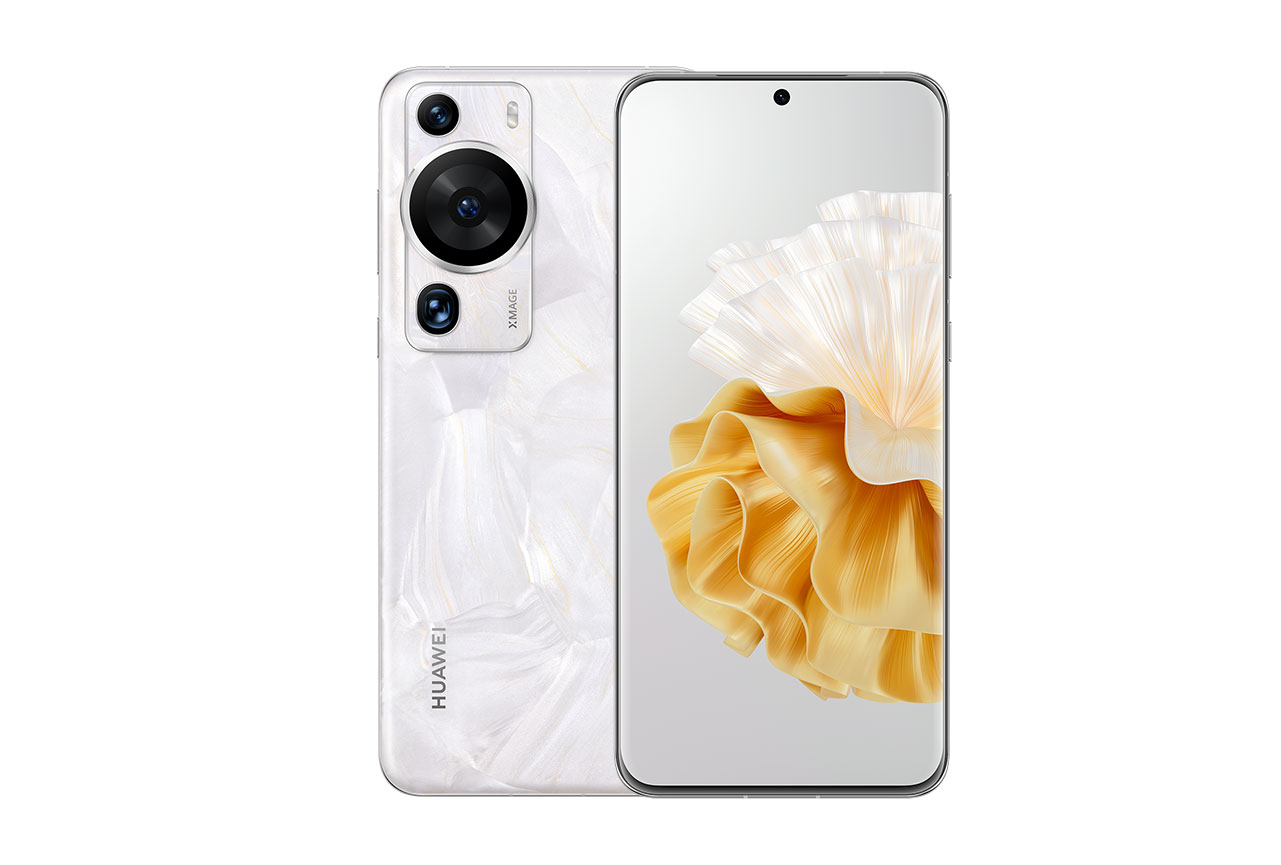
Huawei P60 Pro


Use cases & Conditions
Use case scores indicate the product performance in specific situations. They are not included in the overall score calculations.
Outdoor
Photos & videos shot in bright light conditions (≥1000 lux)
Indoor
Photos & videos shot in good lighting conditions (≥100lux)
Lowlight
Photos & videos shot in low lighting conditions (<100 lux)
Friends & Family
Portrait and group photo & videos
Pros
- Wide dynamic range in landscape or portrait images, with good contrast in every lighting condition
- Nice and vivid colors for every tested lighting condition in photo; good video colors in outdoor and indoor conditions
- Fast and accurate auto-focus in photo mode
- Depth of field with good sharpness on all faces in group shots with subjects in different planes.
- High levels of detail and well-controlled noise in photo, video and zoom
- Nice blur effect and accurate subject isolation in portrait mode
The Huawei P60 Pro takes the top spot in the DXOMARK Camera ranking, thanks to class-leading still image quality with the primary camera and at most zoom settings. In video, the Huawei showed some noticeable improvements over its predecessors in terms of stabilization, color and texture rendering, coming very close to the performances of the Oppo Find X6 Pro and the Apple iPhone 14 Pro.
The Huawei’s outstanding results were based on innovative imaging hardware and software alike. The P60 Pro isn’t the first smartphone to feature a variable aperture, but it is one of very few devices that offer an aperture range from f/1.4 to f/4 for such a large sensor. The previously released Huawei Mate 50 Pro also provides variable aperture but on a slightly smaller sensor (1/1.56 inch). The aperture is adjusted automatically based on light conditions and content of the scene. For example, in low-light, images are captured wide open; when shooting a group portrait, it stops down to increase depth of field and ensure good sharpness on all subjects. In our tests, this helped with both the exposure and focus results. Results for all other still image quality attributes were very good as well, with accurate and pleasant colors in most conditions, fast and accurate autofocus and a well-tuned texture/noise trade-off.
The P60 Pro’s tele camera does not feature the largest image sensor in the Ultra-Premium segment, but thanks to the fast f/2.1 aperture, the camera is still capable of collecting more light than some of its rivals with bigger sensors. Texture at tele zoom is optimized by using comprehensive image fusion solutions that combine image information captured by the primary and tele cameras. These fusion algorithms kick in across a large variety of use cases and light conditions.
The P60 Pro’s video mode comes with some key improvements over previous models, and with Huawei getting close to perfecting its in-house video HDR solution (HDR Vivid), the brand’s latest flagship is now the firm No.3 for smartphone video, behind the Apple iPhone 14 Pro and Oppo’s Find X6 Pro. In our tests, footage recorded with the P60 Pro showed good exposure and a wide dynamic range in all conditions. Colors were nice, too, and the stabilization system did an effective job at counteracting camera shake. Texture, noise and the autofocus were all decent as well but left some more room for improvement than the other video quality attributes.
The Huawei is also an excellent option for shooting close-up images, thanks to macro mode being available with both the ultra-wide and tele camera, a feature that was also available on the Mate 50 Pro+. The benefit of having two camera modules with macro capabilities is that it allows for macro shoots at various shooting distances. It also allows the photographer to keep a distance to the subject, which is important when capturing live subjects. In our tests on the P60 Pro, the macro capabilities of the tele camera provided DSLR-like depth of field. Portrait mode performance was in line with the best in class, providing natural rendering with accurate subject isolation and a nice blur gradient. Please note that DXOMARK only tests one mode (the best one), so these additional capabilities do not affect the close-up score. The Huawei P60 Pro was tested in AI-off mode. The Huawei P60 Pro was tested in its default mode, with the AI off.
Performance in the Friends & Family use case was excellent, thanks to the best exposure trade-off in challenging portrait scenes that we have seen to date. The Huawei’s ability to preserve contrast on faces while providing accurate exposure and protecting highlights in difficult backlit scenes is unmatched. The camera also managed to render accurate skin tones for most skin types and in most condition in both photo and video. In addition, it excelled at freezing motion and capturing sharp subjects even in dynamic scenes, especially for low-light conditions, for indoor and outdoor conditions. In this regard, the P60 Pro is on par with the other top players such as the Oppo Find X6 Pro and Apple iPhone 14 Pro. Bokeh mode delivered great results, too, with images that were pretty close to what you would expect from a DSLR and fast lens.
The P60 Pro is the new No. 1 in the low-light use case. Exposure was good, even in very low light, thanks to the ability to open the aperture up to f/1.4 in dim conditions. Colors were natural, even in night shots, and the camera managed to capture fairly high levels of detail while keeping noise under control, especially in photo mode. One of the P60 Pro’s main advantages in low light was the ability to freeze motion and keep motion blur to a minimum.
When using the tele zoom in low light, the camera still recorded good detail, thanks to effective image fusion algorithms being used down to a light level of 5 lux. Even at long tele (around 200mm equivalent) the P60 Pro delivered better detail than its main rivals in the tele zoom category.
Low-light video clips were competitive as well, with good exposure and fairly accurate white balance overall. Stabilization and autofocus remained effective in low light.
Test summary
About DXOMARK Camera tests: DXOMARK’s Camera evaluations take place in laboratories and in real-world situations using a wide variety of subjects. The scores rely on objective tests for which the results are calculated directly by measurement software on our laboratory setups, and on perceptual tests in which a sophisticated set of metrics allow a panel of image experts to compare aspects of image quality that require human judgment. Testing a smartphone involves a team of engineers and technicians for about a week. Photo, Zoom, and Video quality are scored separately and then combined into an Overall score for comparison among the cameras in different devices. For more information about the DXOMARK Camera protocol, click here. More details on smartphone camera scores are available here. The following section gathers key elements of DXOMARK’s exhaustive tests and analyses. Full performance evaluations are available upon request. Please contact us on how to receive a full report.
Photo
Huawei P60 Pro
169
For scoring and analysis, DXOMARK engineers capture and evaluate more than 2,600 test images both in controlled lab environments and in outdoor, indoor and low-light natural scenes, using the camera’s default settings. The photo protocol is designed to take into account the main use cases and is based on typical shooting scenarios, such as portraits, family, and landscape photography. The evaluation is performed by visually inspecting images against a reference of natural scenes, and by running objective measurements on images of charts captured in the lab under different lighting conditions from 1 to 1,000+ lux and color temperatures from 2,300K to 6,500K.
The Huawei P60 Pro is the best device in our Photo ranking to date, making it an ideal option for all types of still imaging. Results in autofocus and exposure were outstanding, in addition to consistently good performances across all other test categories.
In our tests the camera was capable of using zero shutter lag, and therefore capturing the image instantly at shutter press, in all light conditions. Thanks to its variable aperture, which remains a very rare feature on smartphone cameras, and a well thought out auto aperture control that is based on scene content, it also offered the widest depth of field of all current flagship devices.
Exposure performance was outstanding, thanks to a combination of good exposure of the scene with a wide dynamic range and good contrast, even in the most challenging light conditions, such as high-contrast and backlit scenes. In such tough conditions the difference to the competition was noticeable, with comparison devices having to make compromises in terms of exposure, dynamic range or contrast.
Compared to the previous P-series generation, our experts found white balance and skin tone accuracy to be improved, and overall the Huawei P60 Pro produced pleasant colors with nice saturation in most conditions. In addition, the texture/noise trade-off was good, with fairly high levels of detail across all light levels. Unwanted image artifacts were fairly well under control, with only some flare and fusion artifacts occasionally visible.
Close-Up
Close-up is the third new use case score introduced with DXOMARK Camera version 5. It evaluates the camera’s ability to capture detail at subject distances below 10cm and magnifications as close as possible to 1:1.
In our tests, the Huawei P60 Pro provided great macro capabilities with both its ultra-wide and tele camera modules. Both recorded high levels of detail but the tele offered the additional advantages of better subject isolation and a longer shooting distance. To shoot a frame-filling macro with the ultra-wide, you have to get extremely close to the subject, which is not always feasible with live subjects. You also have to be careful that the device does not cast a shade on the subject. Ultra-wide macro mode is therefore most useful for applications such as document scanning. The following examples illustrate how using the tele camera’s macro can create a better macro shot.

Exposure
Huawei P60 Pro
130
Exposure is one of the key attributes for technically good pictures. The main attribute evaluated is the brightness of the main subject through various use cases such as landscape, portrait, or still life. Other factors evaluted are the contrast and the dynamic range, eg. the ability to render visible details in both bright and dark areas of the image. Repeatability is also important because it demonstrates the camera's ability to provide the same rendering when shooting several images of the same scene.
The Huawei P60 Pro delivered good subject exposure in all light conditions. Dynamic range was wide in bright outdoor light as well as in low light.
In very challenging high-contrast conditions, the Huawei P60 Pro occasionally opted for a slightly darker subject exposure than the competitors, in order to preserve better contrast. In these situations, target exposure remained acceptable, though, and the camera delivered an excellent trade-off between exposure, dynamic range and contrast.

Color
Huawei P60 Pro
130
Color is one of the key attributes for technically good pictures. The image quality attributes analyzed are skin-tone rendering, white balance, color shading, and repeatability. For color and skin tone rendering, we penalize unnatural colors but we respect a manufacturer's choice of color signature.
The camera captured nice colors, thanks to a generally neutral white balance and accurate color rendering, even in challenging and unusual lighting conditions. In the example below, the P60 Pro maintained the green cast, which corresponded to the real light used.
Skin-tone rendering was especially good, with accurate skin tones across most skin types and light conditions. On very rare occasions, a slight green cast could be noticeable in bright outdoor light and indoors.

Autofocus
Huawei P60 Pro
125
Autofocus tests concentrate on focus accuracy, focus repeatability, shooting time delay, and depth of field. Shooting delay is the difference between the time the user presses the capture button and the time the image is actually taken. It includes focusing speed and the capability of the device to capture images at the right time, what is called 'zero shutter lag' capability. Even if a shallow depth of field can be pleasant for a single subject portrait or close-up shot, it can also be a problem in some specific conditions such as group portraits; Both situations are tested. Focus accuracy is also evaluated in all the real-life images taken, from infinity to close-up objects and in low light to outdoor conditions.
In our tests, the Huawei P60 Pro autofocus was fast, accurate and reliable. Thanks to zero-shutter lag, it was easy to capture the decisive moment in moving scenes. The camera maintained this snappiness even in very low light, which makes it a great option for such difficult conditions.
Thanks to its F1.4–F4.0 auto-adjustable physical aperture, the Huawei P60 Pro managed to expand its depth of field quite significantly when the scene required to do so. This allowed for good sharpness on all subjects in group shots with the subjects on different planes.

Texture
Huawei P60 Pro
125
Texture tests analyze the level of details and the texture of subjects in the images taken in the lab as well as in real-life scenarios. For natural shots, particular attention is paid to the level of details in the bright and dark areas of the image. Objective measurements are performed on chart images taken in various lighting conditions from 1 to 1000 lux and different kinds of dynamic range conditions. The charts used are the proprietary DXOMARK chart (DMC) and the Dead Leaves chart.
Compared to most competitors in the Ultra-Premium segment, including the iPhone 14 Pro, the Huawei P60 Pro was capable of rendering slightly better fine detail and providing better sharpness. Texture rendering was pretty consistent across all light conditions, allowing for good detail capture even in low light. This said, some local loss of detail and slight oversharpening could be noticeable when shooting the most challenging scenes.
In addition, the Huawei P60 Pro managed to freeze motion better than most rivals, capturing sharp images even in low-light scenes with moving subjects.

Noise
Huawei P60 Pro
117
Noise tests analyze various attributes of noise such as intensity, chromaticity, grain, structure on real-life images as well as images of charts taken in the lab. For natural images, particular attention is paid to the noise on faces, landscapes, but also on dark areas and high dynamic range conditions. Noise on moving objects is also evaluated on natural images. Objective measurements are performed on images of charts taken in various conditions from 1 to 1000 lux and different kinds of dynamic range conditions. The chart used is the Dead Leaves chart and the standardized measurement such as Visual Noise derived from ISO 15739.
Image noise in images was well under control and barely noticeable. Some luminance and low frequency chromatic noise could appear in the shadows and areas of plain color in low-light scenes, but noise was well controlled on textured areas and on subjects, minimizing its intrusiveness.

Artifacts
Huawei P60 Pro
82
The artifacts evaluation looks at lens shading, chromatic aberrations, geometrical distortion, edges ringing, halos, ghosting, quantization, unexpected color hue shifts, among others type of possible unnatural effects on photos. The more severe and the more frequent the artifact, the higher the point deduction on the score. The main artifacts observed and corresponding point loss are listed below.
P60 Pro images were generally free of unwanted image artifacts. However, in some scenes, image quality could be slightly affected by flare. In challenging scenes we also observed some fusion and face rendering artifacts. This was in line with the competition, though. On the plus side, ringing artifacts were less noticeable than on most other flagship phones.
Bokeh
Huawei P60 Pro
85
Bokeh is tested in one dedicated mode, usually portrait or aperture mode, and analyzed by visually inspecting all the images captured in the lab and in natural conditions. The goal is to reproduce portrait photography comparable to one taken with a DLSR and a wide aperture. The main image quality attributes paid attention to are depth estimation, artifacts, blur gradient, and the shape of the bokeh blur spotlights. Portrait image quality attributes (exposure, color, texture) are also taken into account.
In the bokeh tests, the Huawei P60 Pro provided excellent subject isolation and a realistic bokeh shape in both single and group portrait shots. The level of detail was fairly high and images showed good exposure in most conditions. In addition, spotlight rendering was better than on most rivals, thanks to accurate shapes and colors, even night shots. Overall, the P60 Pro is an excellent option for those users who are looking to simulate the DSLR look.
Preview
Huawei P60 Pro
93
Preview tests analyze the image quality of the camera app's preview of the image, with particular attention paid to the difference between the capture and the preview, especially regarding dynamic range and the application of the bokeh effect. Also evaluated is the smoothness of the exposure, color and focus adaptation when zooming from the minimal to the maximal zoom factor available. The preview frame rate is measured using the LED Universal Timer.
Preview was quite improved on the Huawei P60 Pro compared to the Huawei Mate 50 Pro. Still, it wasn’t quite as good as on the class-leading Apple iPhone 14 Pro. Our testers noticed several differences between preview and capture, especially in bokeh preview where depth estimation showed significant differences to the captured image. On the plus side, preview target exposure was generally accurate and close to capture. We also observed some differences in terms of dynamic range, but overall preview and final capture were pretty close.
Zoom
Huawei P60 Pro
169
DXOMARK engineers capture and evaluate over 400 test images in controlled lab environments and in outdoor, indoor, and low-light natural scenes, using the camera’s default settings and pinch zoom at various zoom factors from ultra wide to very long-range zoom. The evaluation is performed by visually inspecting the images against a reference of natural scenes, and by running objective measurements of chart mages captured in the lab under different conditions from 20 to 1000 lux and color temperatures from 2300K to 6500K.
Like for Photo, the Huawei P60 Pro is the best-performing camera to date in the Zoom category. With class-leading results for both Tele and Wide, the gap to the previous No.1 for Zoom, the Honor Magic5 Pro, is quite noticeable.
The strong zoom results are based on both powerful hardware and intelligent software. The fast f/2.1 aperture in the tele lens helps collect a lot of light, and fusion algorithms are deployed to increase detail by combining image information from the tele and primary camera modules. Exposure was accurate and colors were nice in most conditions, with the Huawei providing excellent results across a very large zoom range from around 0.5x to 10x. The sweet spot was at 3.5x (between 80 mm and 100 mm), though, where the camera delivered the overall best zoom image quality. In addition, the P60 Pro’s video zoom has been noticeably improved over the previous device generation, with higher levels of detail in most conditions.
Video Zoom
Despite some significant improvements over the predecessor, video zoom detail was still lower than on some competitors. For example, the Oppo Find X6 Pro rendered better fine detail and applied more effective noise reduction.

Wide
Huawei P60 Pro
122
These tests analyze the performance of the ultra-wide camera at several focal lengths from 12 mm to 20 mm. All image quality attributes are evaluated, with particular attention paid to such artifacts as chromatic aberrations, lens softness, and distortion. Pictures below are an extract of tested scenes.
The Huawei P60 Pro managed to secure the new top score for the Wide category, thanks to a very wide 13 mm equivalent field of view, as well as good fine detail preservation and well-controlled image noise from 13 mm to 18 mm. The device also performs very well in low-light conditions, showing a significant difference when compared to most of the competitors, which usually struggle to maintain high quality and high level of details in these challenging conditions.
The ultra-wide camera balanced auto-exposure, auto-white balance and auto-focus very well. Despite the wide field of view, only a few artifacts, such as color fringing and loss of sharpness at the edges, were visible, and overall sharpness was very good.

Tele
Huawei P60 Pro
128
All image quality attributes are evaluated at focal lengths from approximately 40 mm to 300 mm, with particular attention paid to texture and detail. The score is derived from a number of objective measurements in the lab and perceptual analysis of real-life images.
The Huawei P60 Pro’s tele module offers a native tele zoom factor a bit lower than 3.5x (90mm equivalent focal length). In our tests, it produced decent image quality up to a 10x zoom factor. Despite some loss of detail in the focal length gap between primary and tele camera, fusion algorithms helped to maintain good detail on the scene’s main subject. In contrast to some competitors, for example the Oppo Find X6 Pro, the Huawei was capable of applying this technique in scenes across all light and contrast levels.
The Huawei captured noticeably higher levels of detail at tele zoom settings than other devices with similar tele focal lengths. Especially around 7x, the camera appeared to use some software solution to maximize the resolution potential of the 48MP sensor in the tele camera.
Video
Huawei P60 Pro
159
DXOMARK engineers capture and evaluate more than 2.5 hours of video in controlled lab environments and in natural low-light, indoor and outdoor scenes, using the camera’s default settings. The evaluation consists of visually inspecting natural videos taken in various conditions and running objective measurements on videos of charts recorded in the lab under different conditions from 1 to 1000+ lux and color temperatures from 2,300K to 6,500K.
The P60 Pro’s video mode was tested at 4K resolution and 30 frames per second in HDR Vivid format. The overall video performance was very good, with well-managed exposure and color being the Huawei’s new main strengths in video. Compared with previous models, video stabilization has also been notably improved and is now on the same level as the best in class Apple iPhone 14 Pro. Please note that the videos below were taken in the devices’ own HDR format and will require a device that is able to support it.

Exposure
Huawei P60 Pro
116
Exposure tests evaluate the brightness of the main subject and the dynamic range, eg. the ability to render visible details in both bright and dark areas of the image. Stability and temporal adaption of the exposure are also analyzed.
The P60 Pro was among the best smartphones we have seen in terms of video exposure, delivering good target exposure and a wide dynamic range. The camera did a good job at retaining both highlight and shadow detail, making it a great option for filming high-contrast scenes.

Color
Huawei P60 Pro
120
Image-quality color analysis looks at color rendering, skin-tone rendering, white balance, color shading, stability of the white balance and its adaption when light is changing.
Color was another strong point for the Huawei. White balance was generally pleasant and stable across all conditions. One point of slight criticism was skin-tone rendering in low light, which lacked a touch of saturation.

Autofocus
Huawei P60 Pro
120
Video autofocus lagged slightly behind the best in class, with some very slight instabilities under indoor conditions and noticeable stepping during focus transitions. Despite these slight weaknesses, the autofocus operated smoothly in most scenes and allowed for an overall good video experience.

Texture
Huawei P60 Pro
118
Texture tests analyze the level of details and texture of the real-life videos as well as the videos of charts recorded in the lab. Natural videos recordings are visually evaluated, with particular attention paid to the level of details in the bright and areas as well as in the dark. Objective measurements are performed of images of charts taken in various conditions from 1 to 1000 lux. The charts used are the DXOMARK chart (DMC) and Dead Leaves chart.
The level of recorded detail in Huawei P60 Pro video was high, especially in bright light. However, there was a noticeable drop in detail under indoor lighting and in low light. While the camera managed to capture high levels of detail in static scenes without much motion, fine detail was lost in scenes with more moving elements.

Noise
Huawei P60 Pro
120
Noise tests analyze various attributes of noise such as intensity, chromaticity, grain, structure, temporal aspects on real-life video recording as well as videos of charts taken in the lab. Natural videos are visually evaluated, with particular attention paid to the noise in the dark areas and high dynamic range conditions. Objective measurements are performed on the videos of charts recorded in various conditions from 1 to 1000 lux. The chart used is the DXOMARK visual noise chart.
While some some local noise was sometimes visible in the P60 Pro’s video footage, noise levels were overall well controlled.

Stabilization
Huawei P60 Pro
119
Stabilization evaluation tests the ability of the device to stabilize footage thanks to software or hardware technologies such as OIS, EIS, or any others means. The evaluation looks at residual motion, smoothness, jello artifacts and residual motion blur on walk and run use cases in various lighting conditions. The video below is an extract from one of the tested scenes.
With the P60 Pro, Huawei has made a noticeable step forward in terms of video stabilization. While the Mate 50 Pro showed sharpness inconsistencies that impaired overall video quality, the P60 Pro performed on the same level as the best-in-class Apple iPhone 14 Pro.

Artifacts
Huawei P60 Pro
86
Artifacts are evaluated with MTF and ringing measurements on the SFR chart in the lab as well as frame-rate measurements using the LED Universal Timer. Natural videos are visually evaluated by paying particular attention to artifacts such as aliasing, quantization, blocking, and hue shift, among others. The more severe and the more frequent the artifact, the higher the point deduction from the score. The main artifacts and corresponding point loss are listed below.
Our testers only noticed very few unwanted artifacts in the Huawei’s video footage. This included aliasing, which is quite common even in top-end devices, quantization, which was sometimes visible on colored patches, as well as ringing and flickering, which were mainly noticeably under indoor conditions.


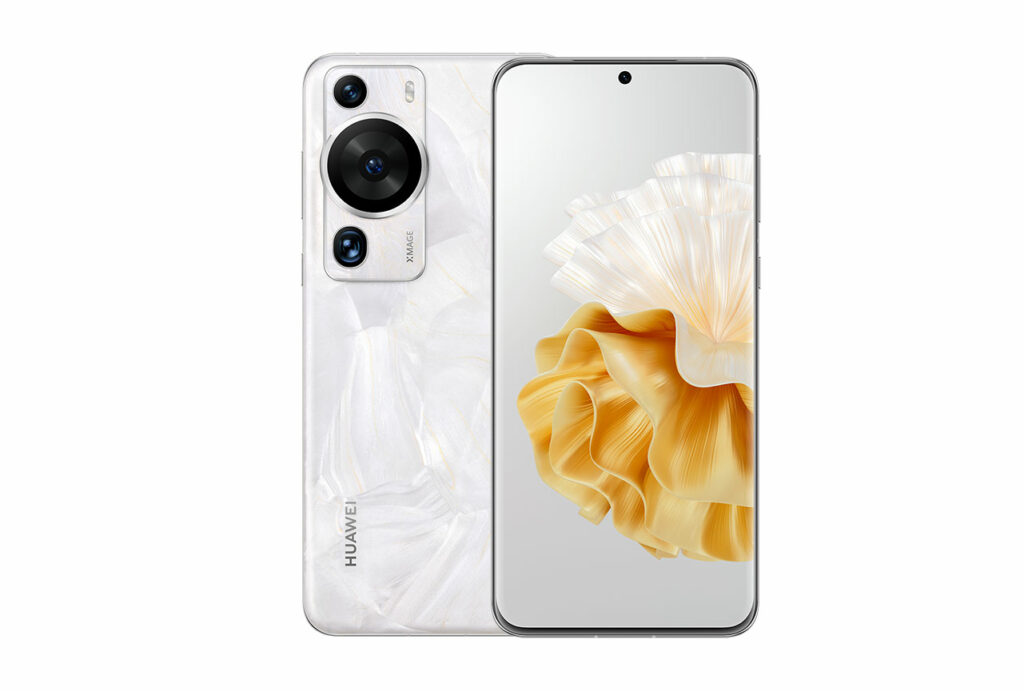


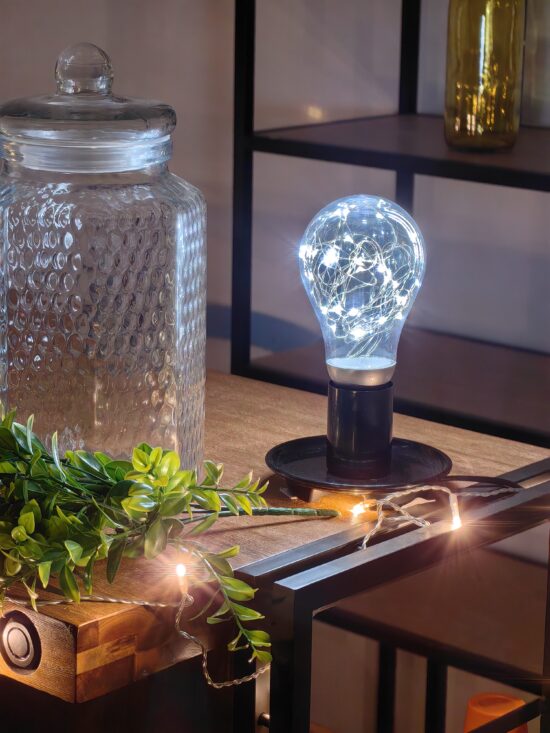
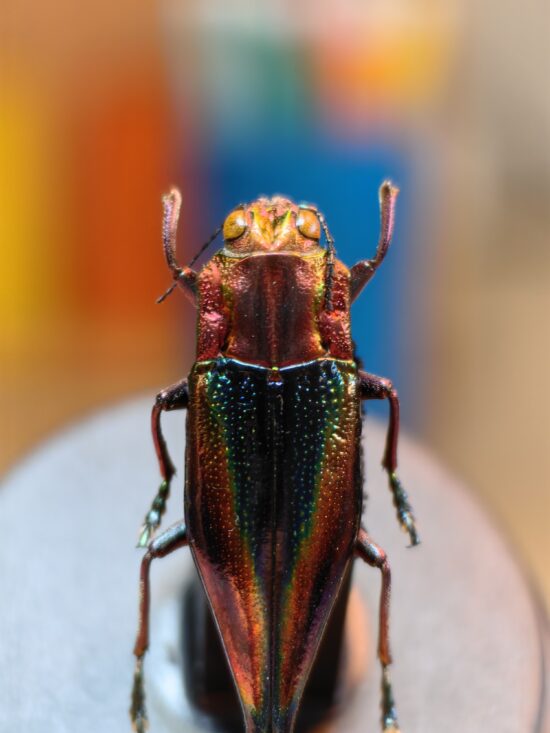
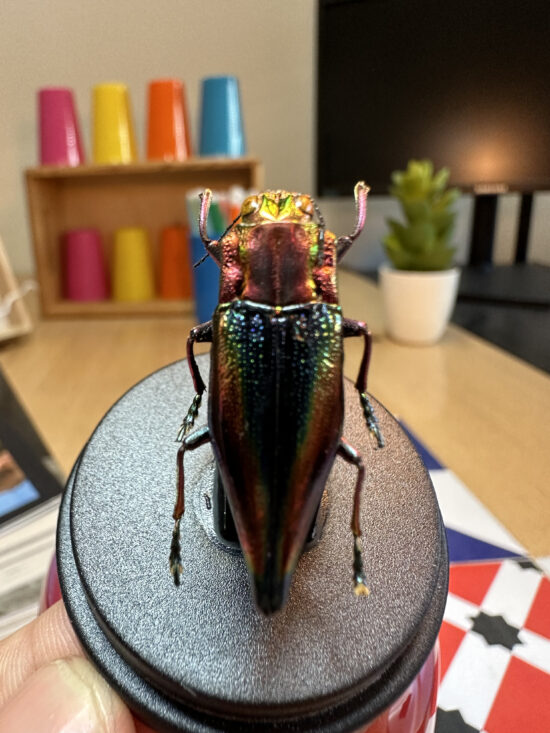
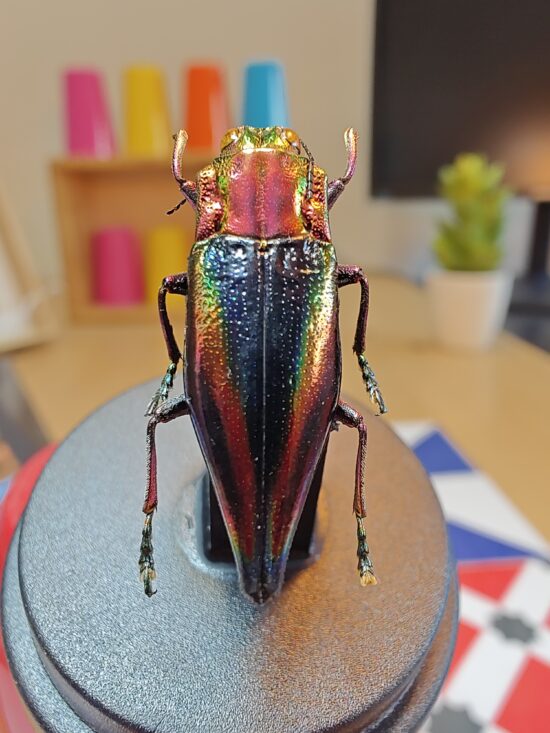









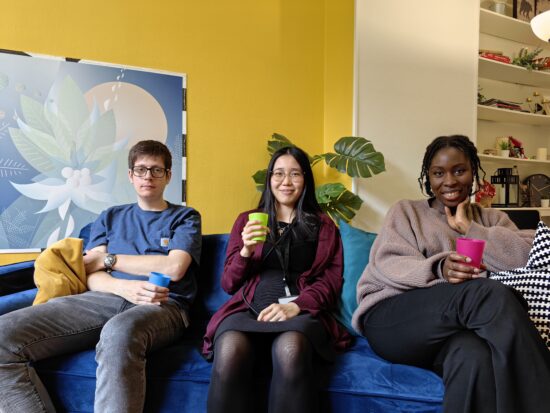
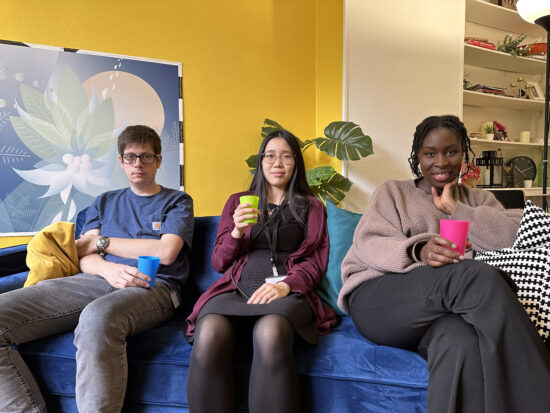
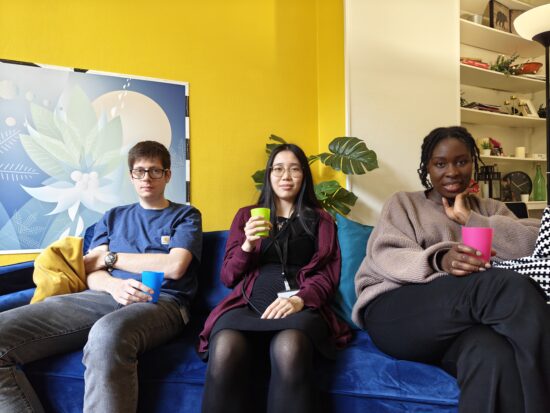
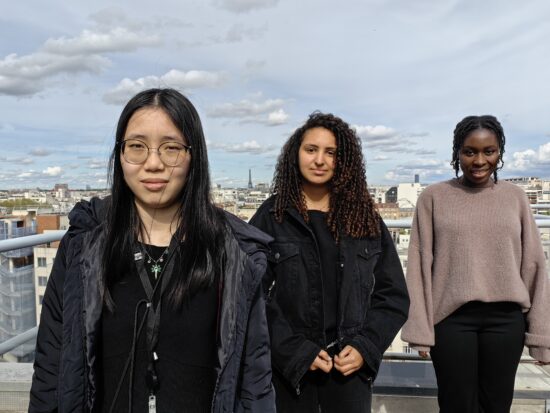
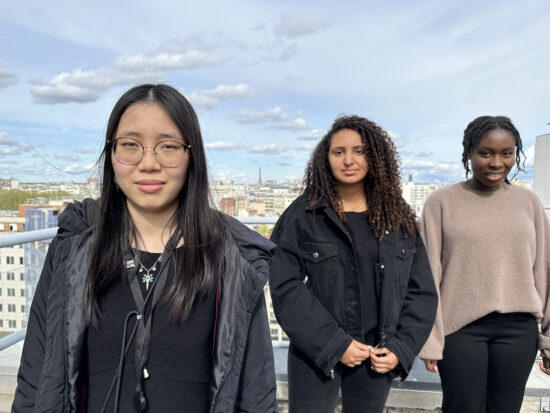
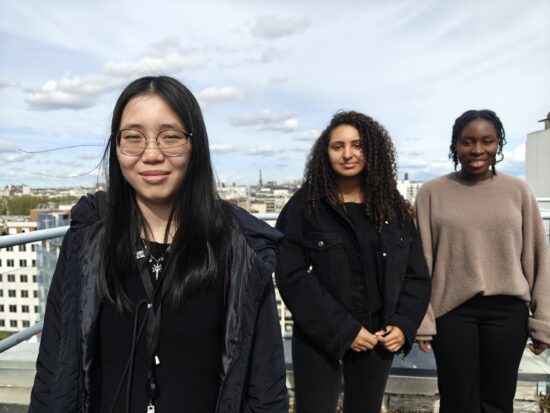





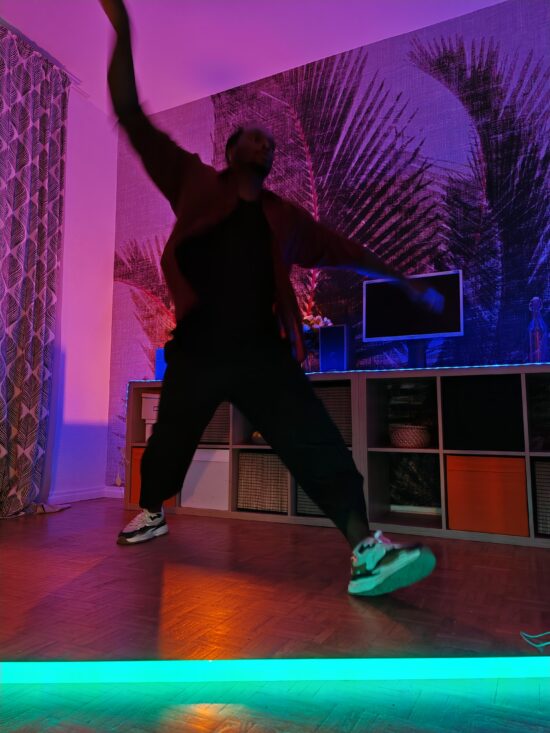







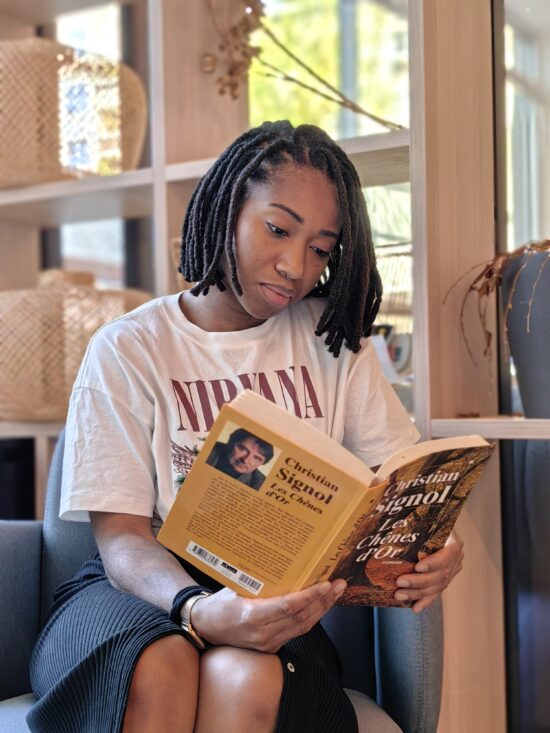
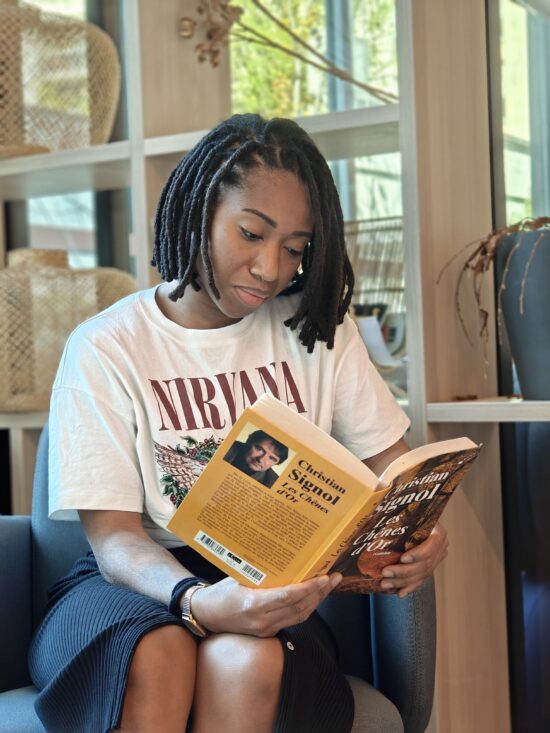
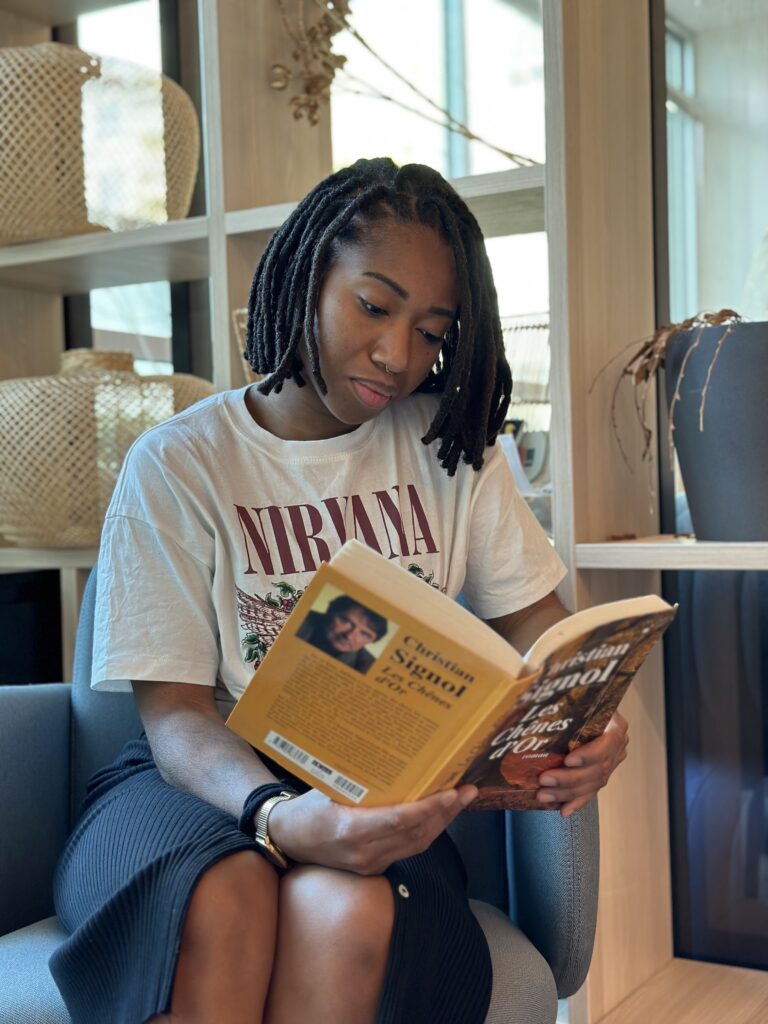




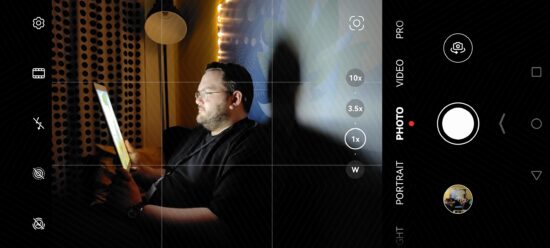

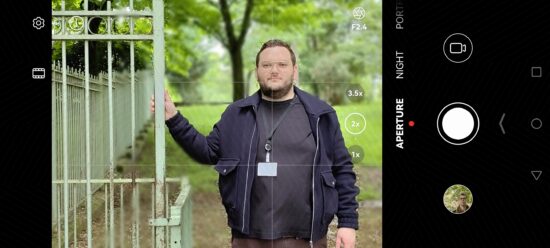















DXOMARK encourages its readers to share comments on the articles. To read or post comments, Disqus cookies are required. Change your Cookies Preferences and read more about our Comment Policy.